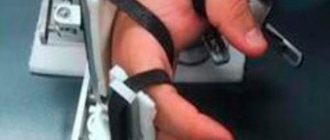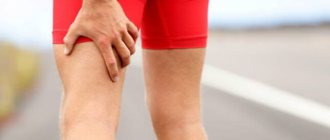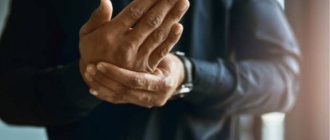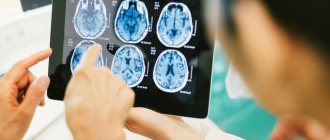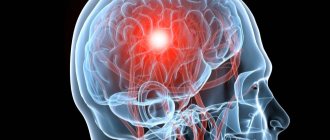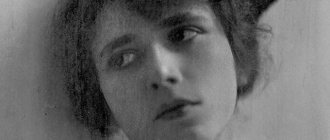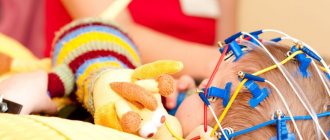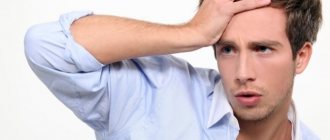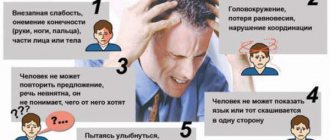In older people, about 30% of cases of epileptic seizures are diagnosed after suffering a brain stroke. A convulsive state may develop in the first days, weeks, or appear unexpectedly several months or years after the stroke. Attacks can affect a specific area (for example, a leg) or the entire body, occur one-time or regularly (2-8% of patients).
Types of post-stroke seizures
Depending on the time of occurrence of seizures, there are 3 types of post-stroke seizures, which have different development mechanisms:
- Precursors (vascular precursive epilepsy) - develop several months, years before the appearance of other symptoms of stroke. The reason for their occurrence is narrowing/partial blockage of the main vessel of the head. Precursor seizures may be the only sign of a micro-stroke or “silent” stroke, which does not lead to noticeable permanent disorders and is diagnosed by chance during a routine MRI or CT scan of the brain.
- Early (epilepsy of irritation). They account for 20-25% of all post-stroke seizures. Occurs during the acute period of rehabilitation (the first 7 days). Their appearance is associated with disruption of the functioning of neurons that have experienced oxygen starvation. Due to disruptions of the antiepileptic system, a small group of nerve cells is formed that produce pathological electrical impulses that cause the muscles to contract unnaturally.
- Late (scarring epilepsy) is the most common type (65-70%). Appear weeks, months, years after a stroke. Caused by the restructuring of nervous tissue. Characteristic of patients who have a cyst or atrophy of the cerebral cortex formed in the affected area. If late-onset seizures first appear weeks or months after an ischemic stroke, there is a high likelihood of their regularity in the future.
Late seizures may occur:
- after emotional stress, physical strain;
- during sleep;
- be a side effect of some medications.
According to the characteristics of their manifestation, convulsive contractions are:
- tonic – prolonged contraction of individual muscle groups;
- clonic (convulsions) - alternating strong contraction and relaxation of muscle fibers.
Risk factors for the development of post-stroke epilepsy include:
- hemorrhagic form of cerebral stroke;
- impregnation of infarction zones with blood components (hemorrhagic transformation of ischemic stroke);
- cardioembolic nature of the disease;
- damage to the cerebral cortex;
- significant area of damage;
- thrombosis of central veins, sinuses;
- severe course of the pathology.
What drugs help recovery?
After an ischemic attack, to reduce brain damage, the patient is prescribed drugs to improve cerebral circulation and drugs that stimulate the restoration of nerve conduction. Medicines are selected taking into account the severity of brain damage and the localization of the pathological focus after acute cerebrovascular accident.
Let's look at the main medications after a stroke and their effect on the human body:
- Preparations based on Citicoline (Ceraxon). When taking the medicine, metabolism in the nervous tissue improves and swelling decreases. Medicines help restore neural circuits responsible for memory, attention, thinking and other cognitive processes.
Gliatilin. Reduces degenerative phenomena, improves cerebral blood flow and stimulates metabolic processes in nerve cells.
Actovegin. In case of stroke, it protects and stimulates the restoration of brain tissue. The drug is used to treat and prevent stroke in people suffering from transient ischemic attacks.
Mexidol. The medicine is prescribed in tablets or injections. In case of stroke, Mexidol reduces tissue oxygen demand and prevents the death of brain cells.
Glycine and Cerebrolysin. The drugs restore cerebral blood flow and do not cause adverse reactions. They can be given to the victim if it is not possible to urgently (within the first three hours) transport the person to a hospital.
Nootropic drugs. This group of drugs improves brain metabolism. Nootropics after a brain stroke (Encephabol, Nootropil) stimulate partial tissue regeneration, improve amino acid metabolism and prevent hypoxia.
Symptoms and clinical manifestations
Cramps are manifested by contraction of individual muscles of the face, limb, half/entire body, which are usually accompanied by pain of varying intensity. During a seizure, the patient may be conscious or unconscious. The duration of the attack varies: from several seconds to several minutes.
There are many types of seizures, of which three are typical for post-stroke epilepsy. They are usually associated with damage to the frontal lobe of the brain and manifest as a simple partial seizure. A third of patients develop secondary generalization.
| Name of the seizure | Manifestation |
| Simple partial | It occurs without loss of consciousness. Convulsions cover a certain part of the body and may be accompanied by a feeling of déjà vu, disorders of pain and temperature sensitivity. |
| Secondary generalized | The person loses consciousness, his body is shaken by clonic-tonic convulsions. Foam may come from the mouth. |
| Jacksonian | Pathological muscle contractions occur locally and spread to the entire limb. They can be thrown from one side of the body to the other. Consciousness is usually preserved. |
Causes
After a stroke, some healthy nerve cells are susceptible to death.
The cause of convulsive pathology lies in the death of cells in the affected area of the brain , as a result of which cysts and cavities form.
Neoplasms negatively affect neighboring healthy cells and provoke the appearance of spasms in individual limbs.
Also, the causes of convulsive conditions may be:
- Severe nervous tension and stress;
- Psycho-emotional and physical exhaustion;
- Side effects of medications, their overdose or incorrect combination.
First aid for seizures
Sometimes seizures occur as one of the symptoms of a stroke. Very often the attack is accompanied by a loss or disturbance in the level of consciousness. Before the ambulance arrives, such a patient must:
- lay on your side, place a small pillow under your head or build a platform from available materials (jacket, sweater, bag, backpack);
- hold your head so that vomit and saliva can flow down freely;
- wipe off discharge with a napkin;
- Hold the victim’s arms and legs without using brute force. This will prevent involuntary injuries to others and to oneself;
- If at the end of the seizure the patient stops breathing, proceed to chest compressions and artificial respiration.
Strictly contraindicated:
- put any objects into your mouth. They can damage teeth and oral mucosa;
- try to immobilize the patient, unclench his fingers;
- give water - the victim may choke on it;
- offer any medications, except in cases previously agreed upon with the doctor;
- offering ammonia can cause respiratory arrest.
Procedures aimed at rehabilitation
Rehabilitation measures are no less important in the treatment of post-stroke seizures. They can significantly improve the patient’s condition after a stroke and are considered effective in preventing secondary strokes. The basic principles of rehabilitation are as follows:
- Rehabilitation measures should be started as soon as possible after stroke treatment. Rehabilitation treatment consists of preventing contracture of muscle tissue, vein thrombosis, bedsores, and pneumonia.
- Therapy should be carried out in a hospital setting or in specialized centers.
- Close people should take part in the rehabilitation process. They monitor the implementation of the recommendations prescribed by the doctor at home.
Features of treatment
The therapeutic approach depends on the type of seizure. If these are warning signs, specific anticonvulsants are not prescribed. The main goal of treatment is to eliminate the narrowing of the artery. Depending on the cause of the pathology, the patient is prescribed anticoagulant medications (aspirin), blood pressure pills, and neuroprotectors.
Early seizures do not require immediate specific treatment. They usually disappear on their own once the metabolism in the brain has stabilized. Antiepileptic drugs are prescribed exclusively to patients with repeated unprovoked seizures.
Isolated late attacks also require observation. If episodes of seizures are repeated, there is a possibility of developing post-stroke epilepsy, a chronic disease manifested by periodic convulsive conditions. If the diagnosis is confirmed, patients are prescribed anticonvulsants:
- carbamazepine (tegretol, finlepsin);
- valproates (convulex, convulsofin, depakine, valparin);
- topiramate (maxitopyr, topsaver, topamax);
- lamotrigine (convulsan, lamitor, lamictal);
- Levetiracetam (Keppra).
An alternative to drug treatment for seizures is the installation of a miniature vagus nerve stimulator. It helps dampen abnormal nerve impulses that cause epilepsy.
Types of therapy
Drug treatment for stroke can be divided into groups:
- hypotensive;
- nootropic;
- blood thinners;
- decongestants;
- cardiotonic;
- cerebral.
Drugs for brain stroke are selected taking into account the symptoms. In addition to the symptoms that have arisen, the doctor, when selecting treatment, takes into account the mechanism of development of stroke: ischemia or hemorrhage.
For ischemic stroke
In this form, the cessation of blood flow to an area of the brain occurs due to blockage of the artery by a blood clot or atherosclerotic plaque.
Treatment of cerebral ischemia is aimed at restoring blood flow to an area of brain tissue. Let's see what drugs are prescribed:
- Nootropic drugs. Neuroprotectors will reduce hypoxia, reduce the area of the affected area and prevent further damage to neurons.
- Blood thinner. Medicines after stroke that reduce blood viscosity are necessary to improve cerebral blood flow and prevent the recurrence of blood clots.
- Sedatives. Sleeping pills and sedatives for cerebral stroke accompanied by an ischemic process are necessary in the acute stage of the disease. Providing rest reduces the area of damage to brain cells and prevents early post-stroke complications.
- Hypotensive. Blood pressure-lowering medications are needed to prevent unwanted stress on blood vessels.
- Diuretics. Necessary to prevent cerebral edema in the acute stage of the disease.
Possible complications
Older people, who make up the bulk of those affected, are more sensitive to the side effects of anticonvulsant medications. It's connected with:
- simultaneous use of 3 or more medications of different pharmacological groups that can interact with each other;
- unsatisfactory condition of the liver, kidneys;
- the presence of cognitive impairment;
- accumulation of antiepileptic drugs in blood serum.
Most common side effects
| Active substance | Violation |
| Carbamazepine, phenytoin |
|
| Valproate |
|
| Topiramate |
|
WHY DO PATIENTS HAVE SEIZURES AFTER A STROKE?
A blocked or ruptured blood vessel can lead to seizures. In both cases, blood flow in the brain is disrupted and sufficient oxygen ceases to flow. Some time after a stroke, the following factors can cause seizures:
- blood clot formation;
- a sharp increase in blood pressure;
- insufficient nutrition of brain cells;
- necrosis of the damaged area;
- cyst in the frontal lobe of the brain;
- nervous tension, stress;
- depression;
- infections and inflammation;
- physical stress;
- increased stress on the body;
- long-term use of certain types of drugs;
- drug overdose;
- incompatibility of medications.
FOLK METHODS IN COMBATING CONVIVUS SEIZURES AFTER STROKE
Phototherapy acts as an additional treatment method. Convulsive attacks caused by tension can be reduced with decoctions of the following herbs:
Medicinal plants have contraindications, so it is recommended to consult a doctor before use. A specialist will help you choose the appropriate complex.
Conclusion
Seizures are one of the warning signs and symptoms of stroke. Malaise may indicate the onset of bleeding in the brain. Also, seizures are often a consequence of poor circulation and lack of nutrition to brain cells. The disorder requires treatment, so you need to contact a specialist to select the optimal set of restorative measures. It is worth considering that seizures some time after a stroke, namely during the rehabilitation period, may indicate that the prescribed drug therapy does not help or the drugs are poorly compatible.
